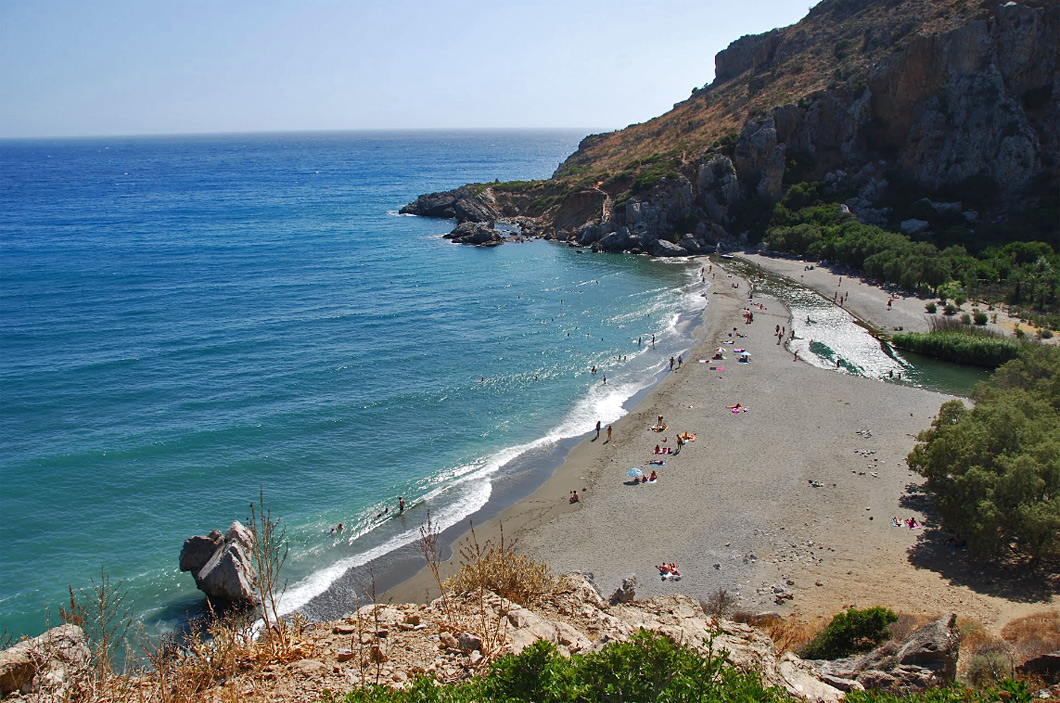Preveli with its riverside palm-groves (burnt in the summer 2010, but regenerated at the moment) is one of the most famous and beloved beaches in Crete. Its name – and that of the broader region – is taken from the historical monastery nearby, dedicated to St. John the Theologian.
The forest of palms, covering some 10 acres, was the second largest of its sort in Crete (the first being at Vai in east Crete): it consists of this endemic form – the Theophrastus palm. Apart from these, there exists willows, oleanders, carobs, skina and reeds. The fire caused massive ecological damage. Fortunately the larger palms survived; and numbers of the smaller ones are putting out shoots, so that there is good hope that in a few years it will largely have grown back.

A walk on the bank or a pedalo up the river itself through the palms and oleanders and into the gorge is a quite unforgettable experience. At the mouth of the gorge, where the river Kourtaliotis ends in a delta, is the exquisite beach of Preveli. It has pale sands and a stony bottom to the crystalline water.
Preveli can be reached in a number of ways. If you have a car or a motorbike, set off from Plakias towards the Preveli Monastery – follow the signs and at 1.5 km after the Lower Preveli Monastery you will reach a flat area, which is used as a parking lot by visitors. From there runs a footpath which in 20 minutes will take you to the beach.
The view on the way down is captivating; the ascent is another matter – it is rather tiring, especially in the midday hours!

Alternatively there is a shortcut along a dirt-path which leads to Drymiskiano Ammoudi, and thence another takes you to the beach in only 5 minutes. If shorter, it lacks the views of the first. For those without a vehicle, boats leave from Plakias and Aghia Galini for Preveli.
Next to Preveli a path conducts one to the beach at Drymiskiano.








